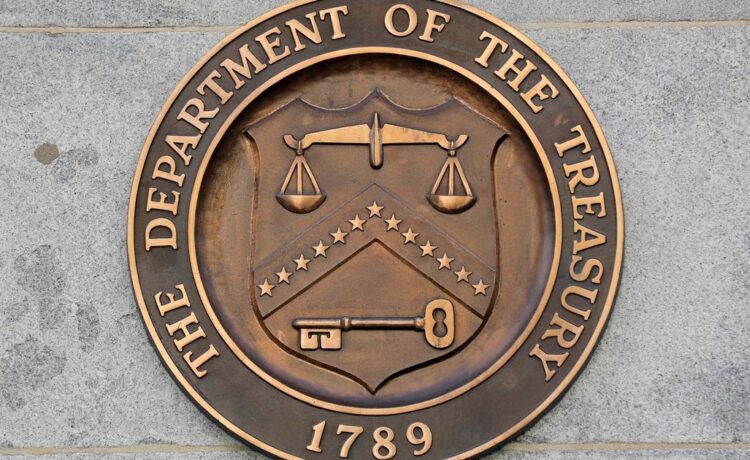The United States is living through the most intense period of geopolitical competition since the end of the Cold War, and its strategic rivals—China, Iran, and Russia—have expressed a shared desire to disrupt the U.S.-led international order. To quote former Deputy National Security Advisor for International Economics and prominent sovereign wealth fund advocate Daleep Singh, “Since today’s great powers are also nuclear powers, barring catastrophic miscalculation, the logic of mutually assured destruction suggests that competition is more likely to play out in the theater of economics than on the battlefield.”
More From Our Experts
As the leading economic and geopolitical power in the world, the United States needs a new flexible investment authority—akin to but ultimately distinct from a “traditional” sovereign wealth fund—that is capable of underwriting the United States’ affirmative vision for a rules-based international economic order or, given the Donald Trump administration’s recent rejection of that system, at least help underwrite the nation’s foreign policy objectives.
Trump’s Wishful Thinking for a Sovereign Wealth Fund
More on:
On February 3, 2025, President Trump issued an executive order, entitled A Plan for Establishing a U.S. Sovereign Wealth Fund, directing the secretary of the treasury and the secretary of commerce to develop a plan for such a fund consistent with the following objectives:
- Promote fiscal sustainability by creating an alternative source of income for federal coffers capable of paying down the national debt (or at least covering interest payments).
- Lessen the burden of taxes on American families and small businesses by creating an alternative source of income that could ultimately replace some portion of existing tax revenue.
- Establish economic security for future generations by creating a fund capable of investing domestically in the United States to support strategic industrial policy objectives akin to the intent behind the CHIPS Act.
- Promote U.S. economic and strategic leadership internationally by creating an instrument of foreign policy capable of investing abroad in assets or projects that promote U.S. national security or strategic objectives.
As Council on Foreign Relations Senior Fellow Brad Setser has explained at length, the first two objectives—which direct the fund to seek a level of returns that could be used to (1) pay down the national debt or (2) replace tax revenue as a source of government funding—are deeply implausible options in a country whose government needs to borrow money to cover its operating costs.
More From Our Experts
Ultimately, any realistic proposal to create a sovereign investment vehicle will require new appropriations from Congress. Given the nation’s current spending deficit, a fund tasked with providing the U.S. government and taxpayers with fiscal relief would need to successfully attain returns above the borrowing rate for the U.S. government (about 4–4.5 percent today) and of such a magnitude that the fund’s profits could meaningfully contribute toward paying down the nation’s $36 trillion national debt.
The Congressional Budget Office projects interest payments on the national debt will total nearly $1 trillion this fiscal year and rise rapidly throughout the next decade. The ten-year weighted average returns on sovereign wealth funds from 2012 to 2022 was ~6.7 percent, leaving a meager ~270 basis point spread between the United States’ cost of capital and a new U.S. sovereign wealth fund’s realistic rate of return. Notably, proposals to “monetize the asset side of the U.S. balance sheet” to capitalize a sovereign fund also demonstrates a basic lack of understanding of U.S. government accounting rules and the law governing the financial treatment of taxpayer resources.
More on:
The below chart illustrates that even if Congress appropriated a trillion dollars to create a sovereign wealth fund, it would not improve the United States’ fiscal picture.
Alternatively, some bipartisan consensus already exists for Trump’s second two objectives: using a state-owned investment vehicle to enhance U.S. national and economic security through a range of investments at home and abroad. Particularly abroad, a sovereign investment vehicle capable of using a wider array of financial instruments than traditional federal financial assistance could better underwrite U.S. foreign policy than existing federal programs do today.
Establishing a U.S. strategic investment fund capable of advancing U.S. foreign policy objectives outside of the remit of standard development finance work would require forming a new entity with (1) a clearly outlined strategic rationale focused on competition with the United States’ adversaries, (2) a balanced board and specialized staff, (3) thorough bylaws, investment criteria, and evaluation standards, and (4) a robust upfront infusion of funds from Congress. Treasury Secretary Scott Bessent and Commerce Secretary Howard Lutnik will need to consider these elements in advance of the May 6 deadline in the president’s executive order, which requires the secretaries report their joint plan and recommendations to the White House on available mechanisms to create a U.S. sovereign fund.
Justification for a U.S. Strategic Investment Fund
The creation of a U.S. strategic investment fund would mark a significant change in the potential and practice of U.S. economic statecraft abroad, particularly in the context of intensifying strategic competition with China. Currently, neither the private sector nor existing public authorities have sufficient incentive or flexibility to advance U.S. strategic objectives at the pace and scale needed for the United States to prevail in the current contested geopolitical and economic environment.
Private sector actors often lack the incentive to invest in projects with long time horizons, large and complex risks, sizeable information gaps, or extensive coordination requirements, particularly when less complex investment opportunities exist with a higher likelihood of generating superior risk-adjusted returns over a shorter period. Existing public authorities lack the flexibility and scale to advance future U.S. strategic investments in a timely fashion. Too many policymakers also attempt to bend existing development finance instruments or foreign aid tools toward national and economic security projects outside the core competency of existing government programs; a strategic investment fund would be a far more suited vehicle to those ends.
Strategic Competition With China
According to William & Mary’s AidData research lab, total outstanding cross-border credit from China to low-income, middle-income, and high-income countries is worth at least $2.6 trillion. Beijing’s efforts to bankroll projects involving strategic assets—such as power plants and transmission lines in Michigan, New Jersey, Ohio, Oregon, Texas, and Virginia; seaports and airports in Greece, Israel, Panama, and the United Arab Emirates; railways and highways in Australia and Hungary; cell phone towers and fiber optic networks in Portugal and Saudi Arabia; oil and liquid natural gas terminals in Canada, Qatar, and Singapore; cobalt, copper, and lithium mines in Argentina, Chile, Indonesia, and Kazakhstan; and underwater sea cables with landing stations in France, New Zealand, the United Kingdom, and throughout Africa—provoke important questions about whether the U.S. and its allies have sufficient financial firepower to compete with China.
Developed economies around the world, including Australia, Belgium, Canada, France, Ireland, Italy, New Zealand, and the United Kingdom, have all built sovereign investment vehicles, often despite running high levels of government debt, to support national and economic security initiatives. Ready access to a large stock of patient and flexible strategic capital could also provide the United States a buffer to deter, respond to, and absorb economic shocks in exigent circumstances triggered by national security crises.
The use of a sovereign investment vehicle as a strategic policy instrument has also grown more common. An analysis by the Financial Times of Global Sovereign Wealth Fund data found that of the funds that governments had pooled into sovereign investment accounts around the world last year, nearly half of those funds and 30 percent of all investments by assets under management (AUM) had declared or observed strategic policy purposes. This differs from “traditional” sovereign wealth funds’ fiscal or savings-related objectives.
Investing at Home and Abroad
While explicitly internationally focused, a U.S. strategic investment fund could also, for narrowly defined economic or national security reasons, invest domestically. As an example, China moved last year to constrain the export of the equipment needed to manufacture synthetic diamonds. Synthetic diamonds are used to coat the cutting tools used to slice extremely hard metals. These tools are essential to building advanced aircraft, weapons platforms, and other advanced industrial products. This equipment technology, originally invented in the United States but now almost entirely produced in China at a fraction of the cost, could be critical to U.S. national and economic security in a conflict.
A U.S. strategic investment fund should have the flexibility to anticipate or react to this type of economic prepositioning by the Chinese—and underwrite the growth or maintenance of this industry in the United States or in an allied country. This type of geographically unconstrained flexibility would position the fund as a supply-side deterrent to ongoing Chinese efforts to create or exploit chokepoints in both the U.S. and the global economy.
Creating a Federally Chartered Corporation
An independent federally chartered corporation could be used to house a strategic investment fund’s day-to-day operations and activities. These types of special purpose entities are wholly owned by the U.S. government and, depending on their statutory authorities, able to coordinate with other federal agencies. The corporation would have the powers of a private entity, similar to Amtrak, the Railroad Retirement Board, the Tennessee Valley Authority, or the National Fish & Wildlife Foundation, to operate independently from federal budget, pay, or other bureaucratic limitations that could prevent the normal operations of an internationally focused investment fund. On-budget federal agencies, such as the U.S. Department of the Treasury or the Development Finance Corporation, are ill suited to house or manage such a fund, as they are subject to federal procurement, accounting, and hiring practices. A federally chartered corporation could retain the power to hire and fire as needed, compensate employees based on performance or skills at levels comparable to other sovereign funds, and potentially issue its own debt instruments.
Board Structure
To achieve its strategic goals, the fund’s board should consist of four cabinet secretaries (ideally from Commerce, Energy, State, and the Treasury), two current members of Congress, and three independent directors. This board structure would limit any one branch of government from influencing the fund’s staffing or investment decisions. Further, it would mirror the independent structure of similar nationally owned investment vehicles in Europe. Independent directors could be appointed by the president and confirmed by the Senate—as at the Federal Reserve—for fixed seven-year terms to maximize the fund’s independence. The fund’s independent directors would have the sole discretion to hire and fire the fund’s executive director. This board structure would help ensure the fund avoided the pressures of political interference, without running into the critiques levied at quasi-government organizations like In-Q-Tel that operate without any coordination obligations or true government oversight.
Executive Director
Like the U.S. Postal Service, an executive director would be selected by the fund’s independent board members and serve a five-year term with the option to extend at the invitation of the board. This individual would need to be an experienced investment professional, ideally with some knowledge of the mechanics of government and U.S. foreign policy.
Staffing
Based on operational data from peer entities around the world, the fund would likely require one-to-two full-time investment professionals per billion dollars of AUM—depending on how the funds are managed (i.e., active versus passive investments, focus on strategic dealmaking, etc.). Building in-house investment expertise, rather than relying on third-party asset managers, is also the only way to ensure the fund avoids major conflicts of interest and stays true to its mission to finance U.S. foreign policy objectives. In addition to investment professionals, national security and economic policy experts could be sent from existing U.S. government agencies to work at the fund to ensure it accurately and effectively implements the board’s direction to advance U.S. national and economic security policy objectives.
Objectives and Investment Criteria
The fund could make investments at home and abroad that advance strategic national interests in areas such as energy security, supply chain resilience, American technological preeminence, and other long-term economic or national security priorities identified by the fund’s leadership. But given the United States’ current inability to invest abroad outside of the context of development finance, and the wide array of available domestic industrial-policy instruments (e.g., taxes, loans, grants, and regulation), the fund should retain a primarily international focus. Today, no U.S. government entity can freely invest in a strategic project in a high-income country, handcuffing the United States in competition abroad with China in the fields of economics and technology.
The fund’s strategic investments should also be subject to a strict multipart test:
1. Does this investment advance U.S. economic and national security objectives?
The fund’s full board could approve strategic objectives that define areas of investment focus biennially. That approval process could also include input from both the executive and legislative branches through their respective board representatives. Rigorous impact analysis—akin to the U.S. International Development Finance Corporation’s (DFC) current diligence and project evaluation processes—could be applied to each potential new investment to ensure its expected impact advances U.S. policy goals over its planned duration. Focusing on economic and national security objectives at the fund could also relieve pressure on the DFC and other existing federal agencies to support explicitly national security–focused investment activity abroad.
2. Does private capital lack the incentive to make this investment?
Each investment must offer a justification for the fund’s investment committee, comprised of fund staff, as to why the private sector today lacks sufficient incentive to make a particular investment or invest at the desired scale.
3. Are existing public authorities unable to make this investment or create sufficient incentive for the private sector to do so?
Investments should only be made when existing U.S. government tools and authorities are demonstrably insufficient, less effective, or more costly to pursue a particular strategic objective. Major gaps exist in the U.S. government’s investment toolkit, but investments under this construct should still articulate the gap they seek to fill.
Measuring Success
At the portfolio level, the fund could target positive financial returns over a defined time horizon, but individual investment return targets could be below-market or negative, depending on the investment’s strategic value. Losing money on strategic investments should be expected, and both the U.S. government and the fund’s leadership should be comfortable with a defined financial-risk-for-impact tradeoff.
Ultimately, the fund should be evaluated on two dimensions: financial sustainability and strategic impact.
- Financial Sustainability: The fund should seek positive return target at the portfolio-level above the risk-free rate with a thirty-year AUM target of $500 billion, consistent with the scale of other large sovereign investment vehicles around the world. To be effective in the political economy of the United States today, the fund would likely need to attain some level of financial self-sufficiency.
- Strategic Impact: Portfolio-level and investment-level strategic impact metrics should be developed and linked to the board-approved focus areas (e.g., energy security, technological preeminence, and supply chain resilience) by fund staff. Performance against those metrics would be evaluated annually and require regular reporting to Congress and an independent inspector general. At a more granular level, each individual investment should be subject to a set of strategic success or impact criteria and—similar to DFC’s development impact methodology—and assigned a composite score to compare results across investments, sectors, and policy objectives. Failure to achieve those success measures over the life of the investment could trigger a decision to exit a particular position.
Sources of Funding
Only congressional action can authorize and subsequently capitalize a new sovereign investment vehicle. Any suggestion by the Trump administration that existing U.S. government assets could be repurposed to capitalize the fund is likely some combination of illegal under current appropriations law or double counting from a budgetary perspective. However, a sovereign fund’s unique structure and purpose—including the intent to make complex financial investments over multiyear time horizons—may be incompatible with the current scoring and budgeting rules for discretionary appropriations and authorization cycles.
Congress should keep the funding process for a U.S. strategic investment fund separate from the annual discretionary appropriations process and attempt to create a unique entity sustained by its own sources of funding (e.g., investment returns on an initial one-time appropriation or a dedicated mandatory funding stream). Unlike some peer institutions, the fund should not take on infusions of outside capital in order to maintain its independence.
Initial Funding Options
The simplest path to seed such a fund would be through a one-time appropriation from Congress for approximately $50 billion. Consistent with other federally chartered corporations, the fund should also have the authority to issue its own debt securities. A new mandatory revenue stream could alternatively or additionally provide the fund with dedicated year-over-year infusions of capital, on top of returns generated by the fund (closing the carried interest loophole and directing the proceeds to the fund would provide approximately $14 billion in funding over ten years).
An Endowment Model for Sustainability
To enhance the fund’s ability to grow and sustain its operations, its assets could also be structured under two accounts: a strategic investment account—as described above and focused on sustainably generating impact—and a principal account focused on generating returns that are consistent with the performance of other sovereign funds around the world (an editable Excel file explaining this notional structure can be found here).
A principal account could be capitalized by the initial appropriation from Congress, which would then allow the fund to become self-sustaining. Protecting the fund’s principal would further enhance the ability of the strategic account to take on additional risk when investing to advance U.S. interests. The primary objective of the principal account would be to generate returns consistent with the Santiago Principles for sovereign funds and other international best practices or standards for asset managers.
Depending on the distribution of the initial infusion of capital between the strategic and principal accounts, the fund could reach its desired scale on a thirty-year time horizon. This long-term approach to financial sustainability would help build an instrument of U.S. power that future generations will benefit from—akin to how decisions to invest in novel institutions after World War II, such as the National Laboratory system, helped secure the United States’ economic and national security in the twenty-first century. The fund could set a thirty-year AUM target of $500 billion, comparable to large peer institutions internationally.
As an historical precedent, the Reconstruction Finance Corporation (RFC) helped finance U.S. industrial policy from 1932 to 1957 through a wide range of investment tools and disbursed $1.5–2.0 billion per year, which was roughly 0.2 percent of the annual U.S. gross domestic product (GDP) on average during this period. Although the RFC is an imperfect comparison today, replicating the scale of that organization’s disbursements would mean a proposed U.S. strategic investment fund could invest $50–60 billion per year, which would require an approximately $1 trillion fund to generate sufficient returns to sustain this level of annual investment. A $1 trillion fund, built through consistent 7–8 percent average returns over a fifty-year time horizon, would place the United States on par and on pace to compete with other leading sovereign investment vehicles around the world, dramatically strengthening the nation’s tools of economic statecraft in the twenty-first century.
Investment Principles and Safeguards for the Fund
Based on lessons learned from existing U.S. government entities and sovereign wealth funds around the world, the following safeguards should be codified in the fund’s charter:
- All strategic investments over 1 percent of the fund’s overall balance should require majority board approval, though nonstrategic investments in passive income generating instruments should not require approval.
- All strategic investments over 1 percent of the fund’s overall balance should require a congressional notification.
- The fund should not purchase or maintain a majority ownership stake in any U.S. company.
- All strategic account investments should be subject to a publicly listed set of principles aligned with U.S. values such as including transparency, debt sustainability, human rights, and environmental standards. Those principles would be reviewed regularly and approved by the fund’s board.
- The fund should be subject to additional independent oversight from its own inspector general.
Conclusion
There are more than one hundred sovereign investment vehicles owned and operated by governments around the world. Governments’ ability to invest via a wide array of financial instruments to achieve strategic goals has become a normalized, if not required, part of advanced economies’ economic and national security toolkit. While the United States has the most innovative financial system in the world, its inability to evolve how and when it harnesses its financial firepower has left the U.S. government racing to find ways to compete with its adversaries at home and abroad. The answer is a U.S. strategic investment fund with appropriate guard rails and an emphasis on placing long-term bets on new institutions that protect the United States’ economic centrality for the next fifty years.





